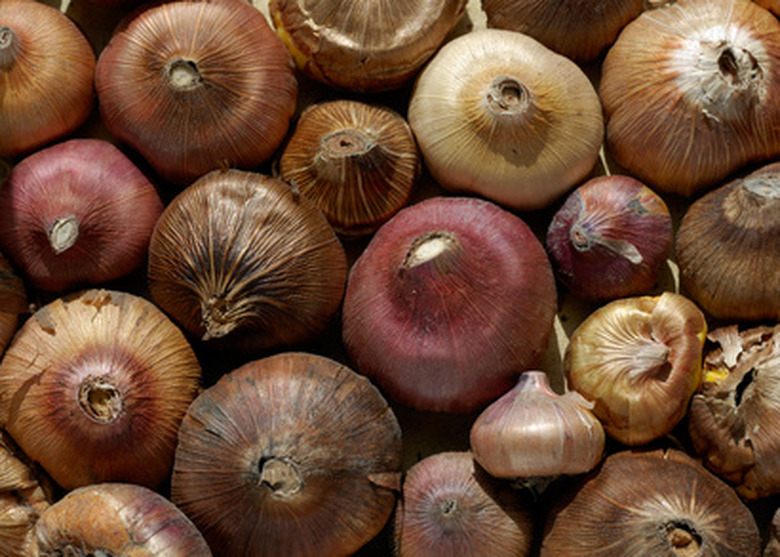How To Plant Bulbs In Oklahoma
Things Needed
- Flower bulbs
- Hand trowel
- Compost
- Manure
- Peat moss
- Slow release bulb fertilizer
- Organic mulch
- Water
Oklahoma, with its USDA hardiness zones ranging from 6a to 7b, has winter temperatures that fall below freezing in all parts of the state. Hardy bulbs such as crocus, daffodil and tulips can be planted in the late summer or early fall. Tender bulbs such dahlia, gladiola and amaryllis will need to be planted in the late spring after the last frost has passed and the ground soil has warmed. Tender bulbs will need to be lifted from the soil and overwintered indoors in preparation for re-planting the following spring.
Step 1
Select a planting site with a full sun exposure or just very light, filtered shade. Provide protection from heavy winds that can damage and dehydrate the bulbs and plants and choose a site that is well drained where neither water nor frosty air will pool.
Step 2
Prepare a well-tilled planting bed rich in organic material. Amend poor or average soil with generous amounts of compost, peat moss and well-aged manure. Till in and mix the soil and amendments to a depth of a foot.
- Oklahoma, with its USDA hardiness zones ranging from 6a to 7b, has winter temperatures that fall below freezing in all parts of the state.
- Tender bulbs such dahlia, gladiola and amaryllis will need to be planted in the late spring after the last frost has passed and the ground soil has warmed.
Step 3
Add a dose of slow release bulb fertilizer with a guaranteed analysis of 5-10-10. Apply according to the product label directions and distribute evenly into the top 6 inches of soil.
Step 4
Plant the bulbs at the package-recommended depth and interval for the specific species and your site soil conditions. Group bulbs in odd numbers and in large drifts for a naturalized appearance when in bloom. Smooth the soil over and around the bulb and tamp down lightly.
Step 5
Water the bulbs and surrounding soil well until the soil is drenched, but not soupy wet.
Step 6
Lay down a 3- to 5-inch thick blanket of organic mulch to protect the bulbs from winter drought and cold temperatures. Straw, leaf mold or grass clippings will all work. You will pull the mulch away in spring after the last hard frost has passed and the soil is thawing.
- Add a dose of slow release bulb fertilizer with a guaranteed analysis of 5-10-10.
- Water the bulbs and surrounding soil well until the soil is drenched, but not soupy wet.
Step 7
Repeat the same process for spring-planted bulbs, but do not mulch heavily (as this is not required).
